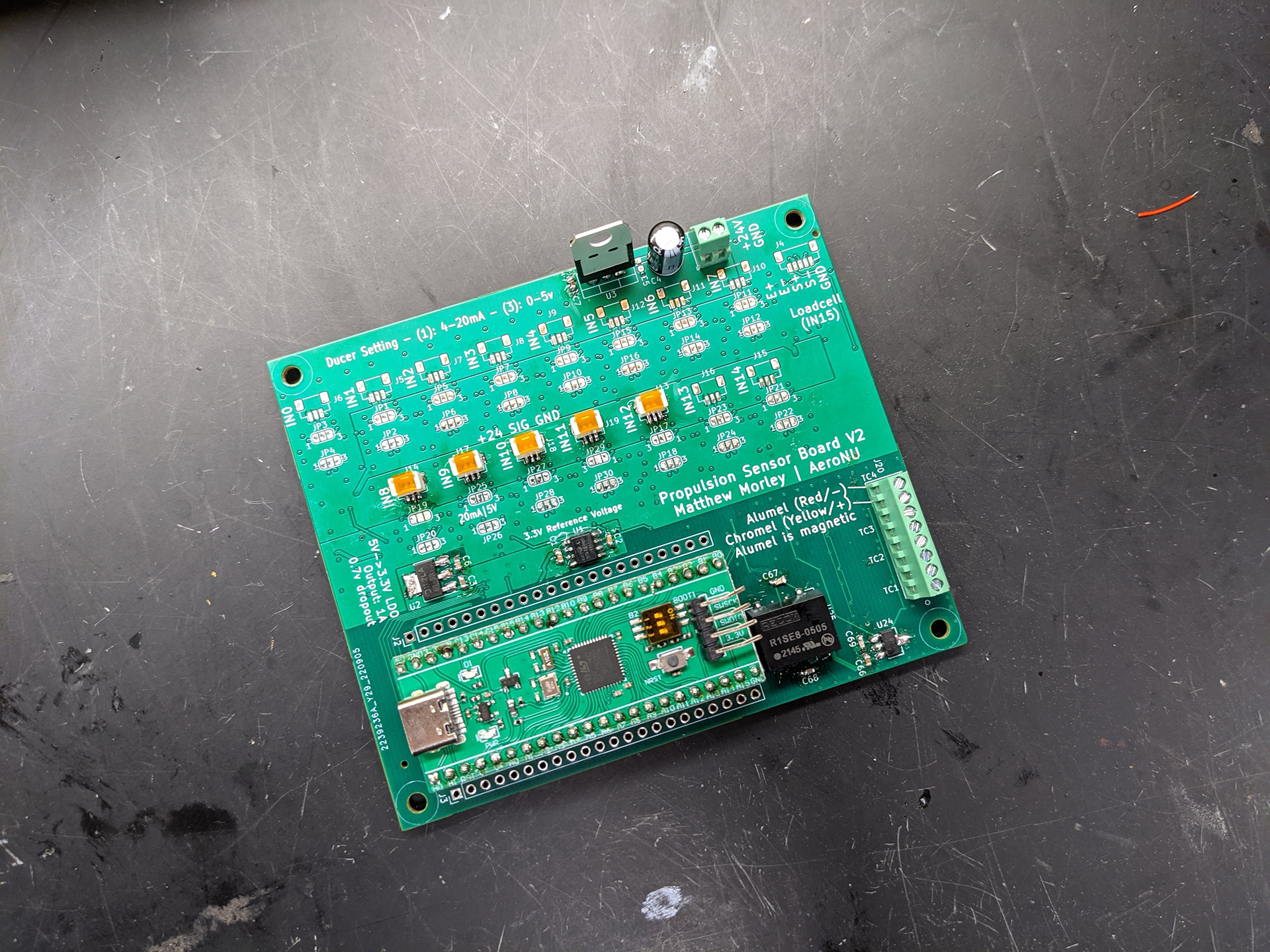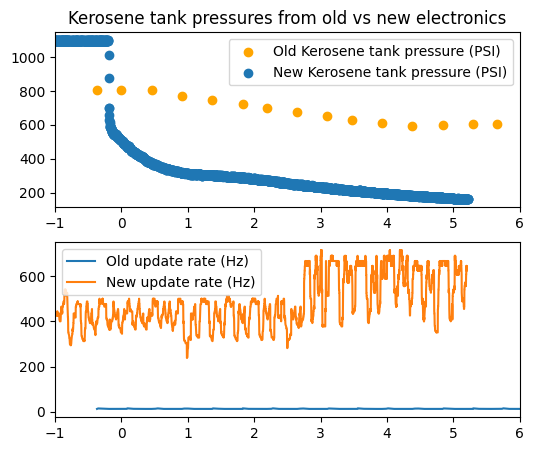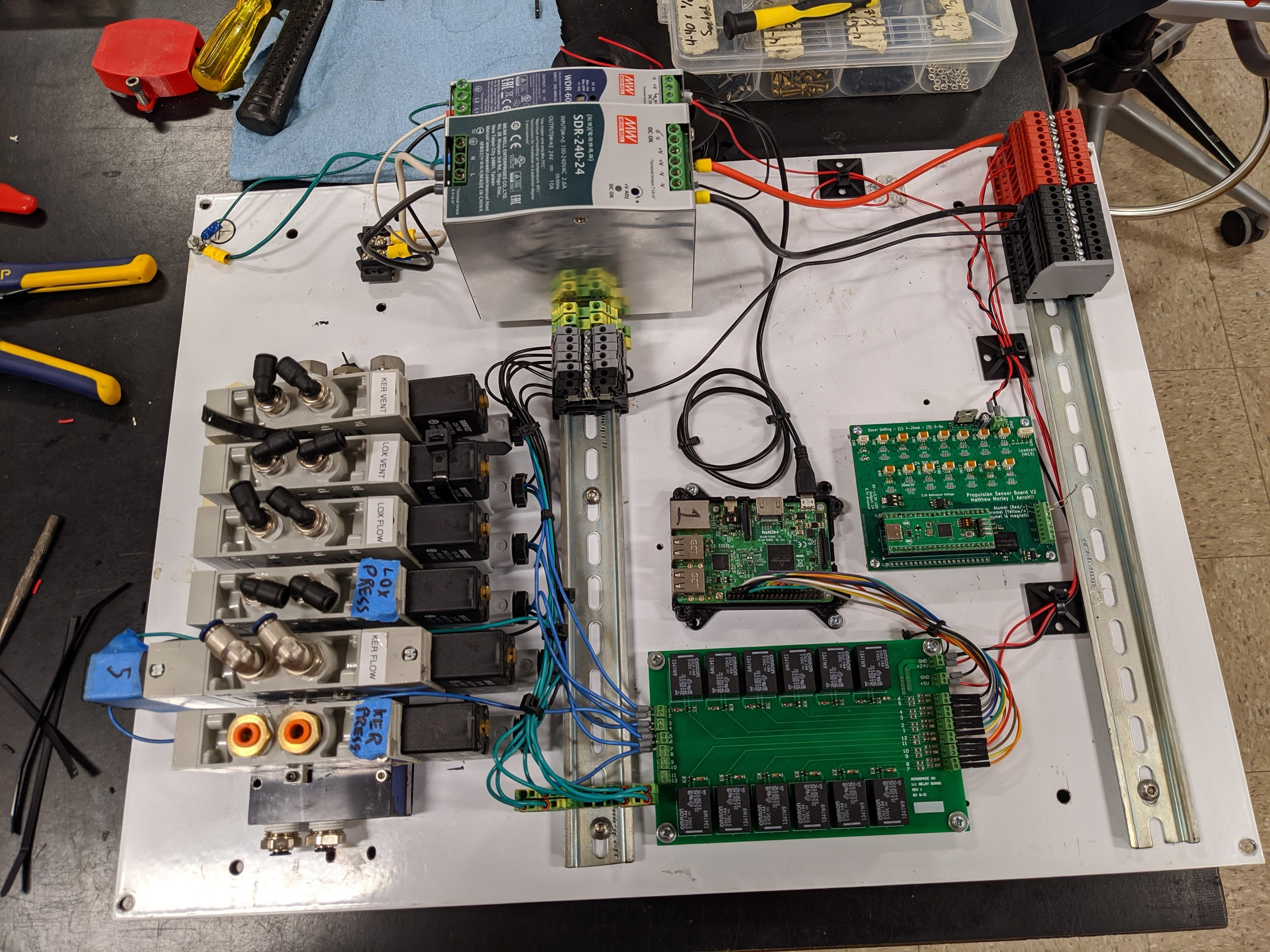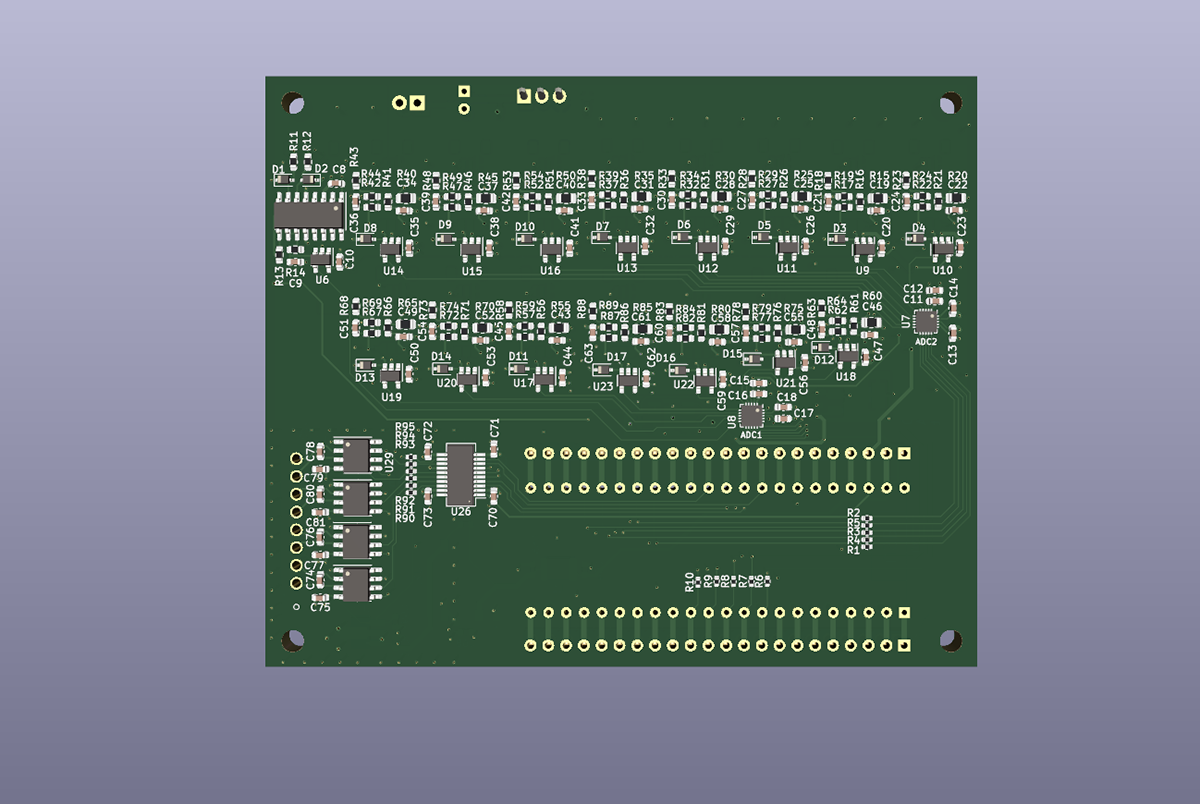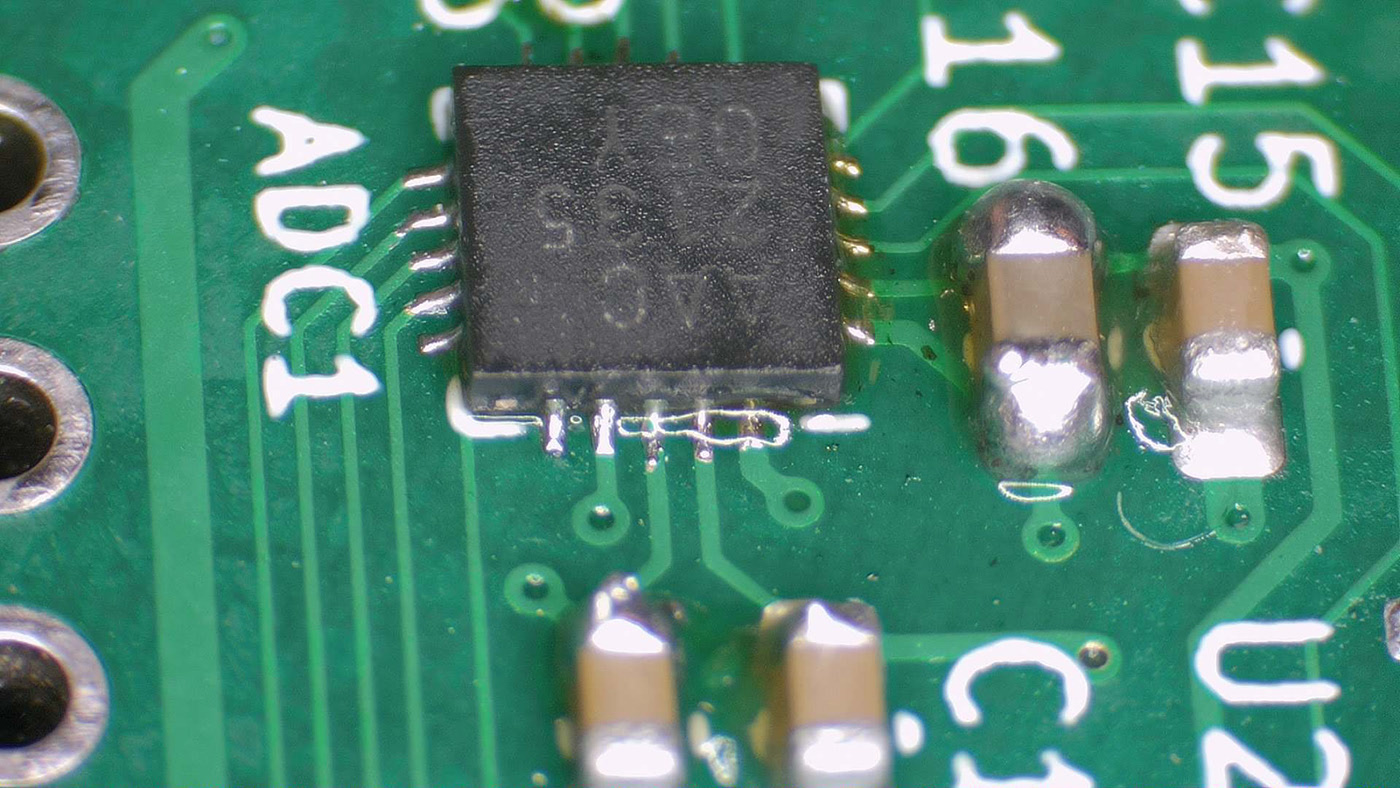AerospaceNU’s Project Redshift was gearing up for a second hot-fire test our liquid rocket engine. The data acquisition electronics used for our first test during summer 2022 was made using a collection of unreliable Arduino breakout boards, could only read temperature from grounded thermocouples, and read pressure from our 10 pressure transducers at 5hz – much too slow to determine what exactly happened during the first test. We needed a solution that could read pressure sensors at faster than 100hz, was robust to accidental ESD damage, and properly support grounded thermocouples.
I designed this high-speed data acquisition board for AerospaceNU’s liquid rocket engine test stand during Summer 2022. The electronics successfully gathered data during a hotfire test of our engine in October 2022. The PCB was designed to validate data acquisition designs for the club’s eventual liquid-propelled rocket, and replace the interim breadboard solution designed during Spring 2022.
Through this project, I learned to use KiCAD, further developed my fine soldering skills, and gained experience verifying and calibrating data acquisition electronics. I also learned how to use KiCAD’s hierarchal sheets to more efficiently represent repeated subcircuits in schematics and some of the basics of mixed signal PCB design.
The design exceeded our requirements on connectivity, data acquisition rate, and resolution. The sensor board has inputs for:
- 15 pressure transducers, either 4-20mA or 0-5v (configurable), at up to 1.5KHz
- 4 type-K thermocouples
- 1 H-bridge loadcell (configurable gain)
- USB serial communication with central Raspberry Pi
Design
Requirements for the data acquisition system were determined working alongside my peers in AerospaceNU’s Propulsion subgroup. We had to balance supporting future expansion with complexity and BOM cost, and a lot of these requirements were driven by hardware that was already installed on our test stand.
| Requirement | Motivation |
|---|---|
| 12 pressure transduer inputs | Must fit at least 10 (currently on stand) + anticipated additions. Fewer can be used for flight |
| Inputs must be 0-5v or 4-20ma | Existing pressure sensors are a mix of both |
| 1 H-bridge loadcell input | Needed to verify engine design & math |
| 4 K-type thermocouple inputs | Need to sense temperature of parts of engine to verify regenerative cooling math – only technically need 2 |
| Interface with Pi | Needs to talk to existing central Raspberry Pi (which runs the stand), and be robust to EMI |
After requirement definition, part selection and schematic capture could begin. ADC options were limited due to chip shortage, but were able to find MCP3564 24-bit ADCs still in stock on DigiKey. We’d used them previously (for a rocket DAQ project), and had a known-working driver already written. We also chose to design around a COTS STM32 microcontroller breakout to further simplify the schematic and reduce part count. We also chose to stick with MAX31855 Type-K thermocouple interface IC, with proper ground isolation to let us use grounded thermocouples.
I designed the circuit board using KiCad 6, my new favorite EDA program. The schematic itself involved a lot of duplicated subcircuits, and KiCad’s layout replication plugin was particularly handy in quickly replicating the input filter and switchover layout 15 times.
Assembly and Test
The passives on the back of the PCB were assembled by JLCPCB, and ICs were hand-soldered. The MCP3564 ADC was particularly troublesome in its 3x3 mm (20-UQFN) package above – note the adjacent 0603 capacitors for scale, themselves only 1.6mm x 0.8mm!
